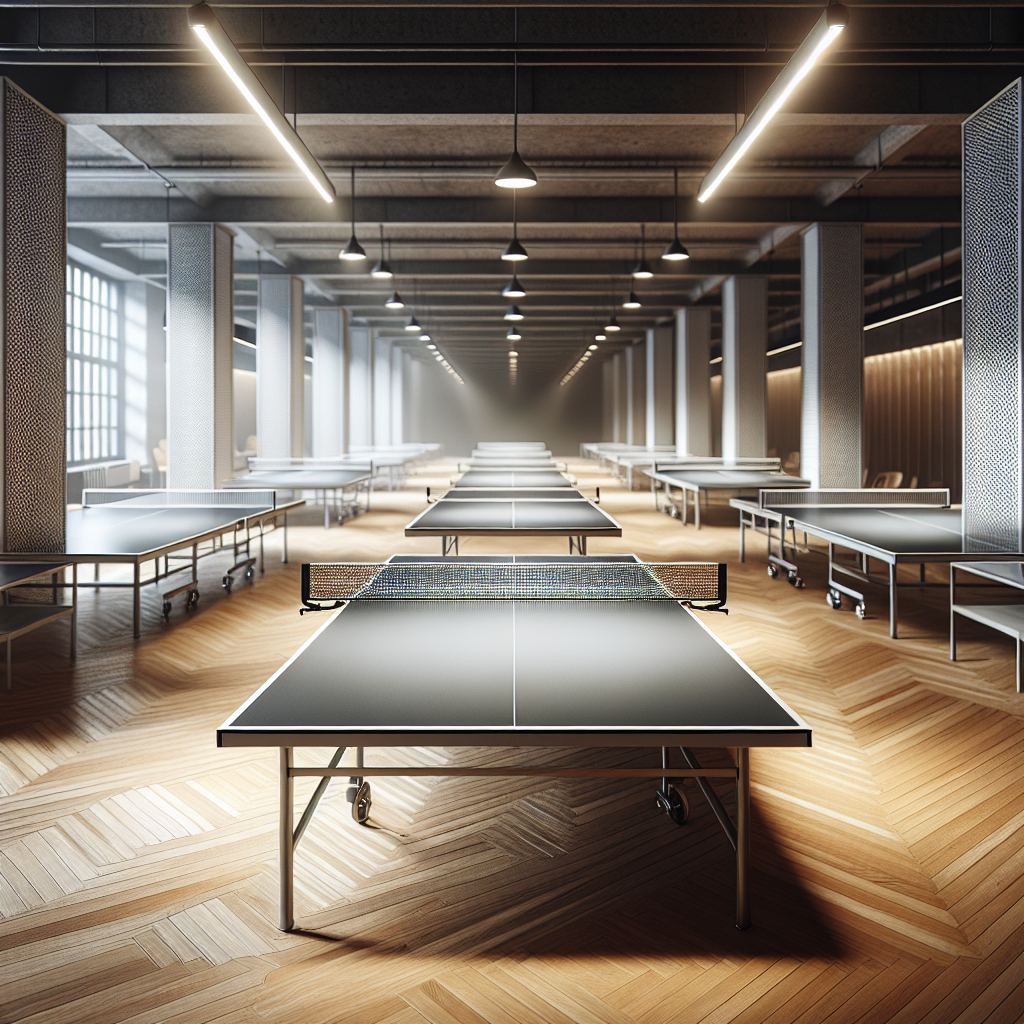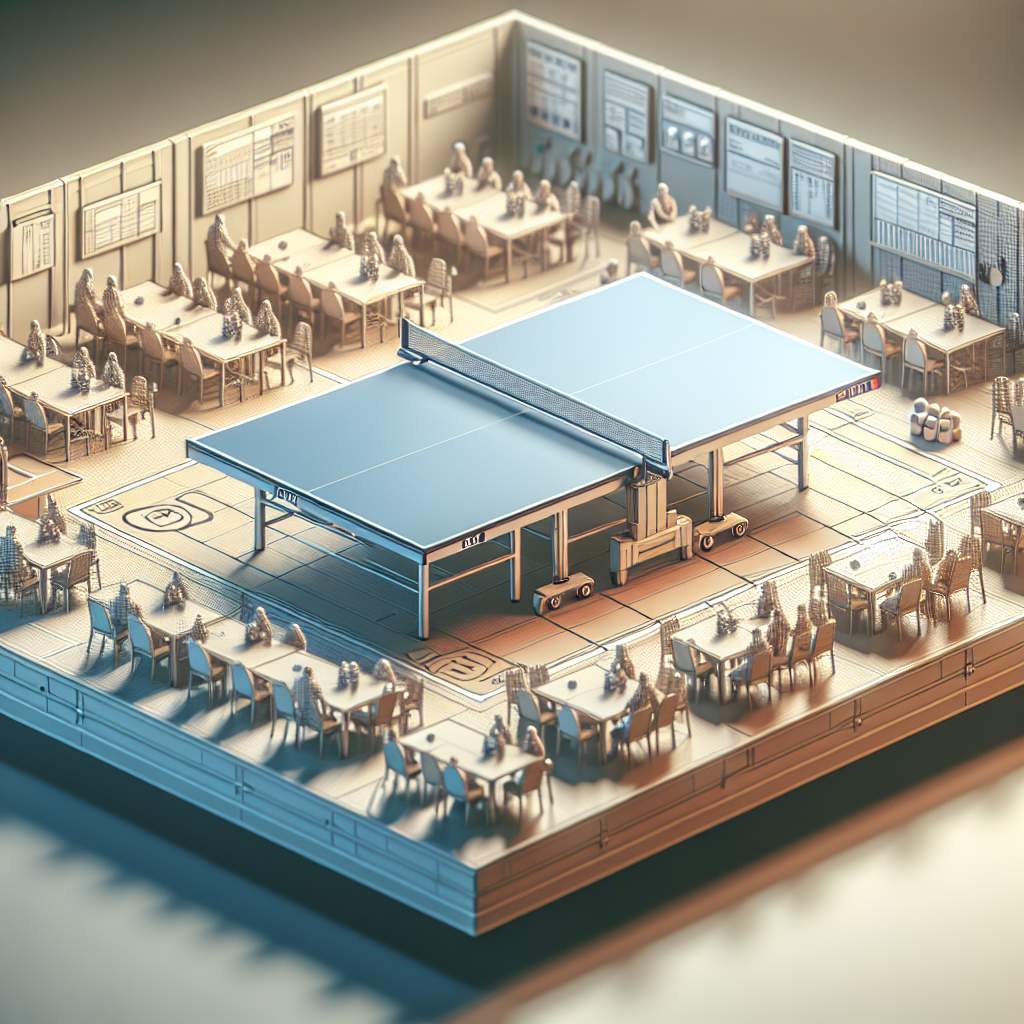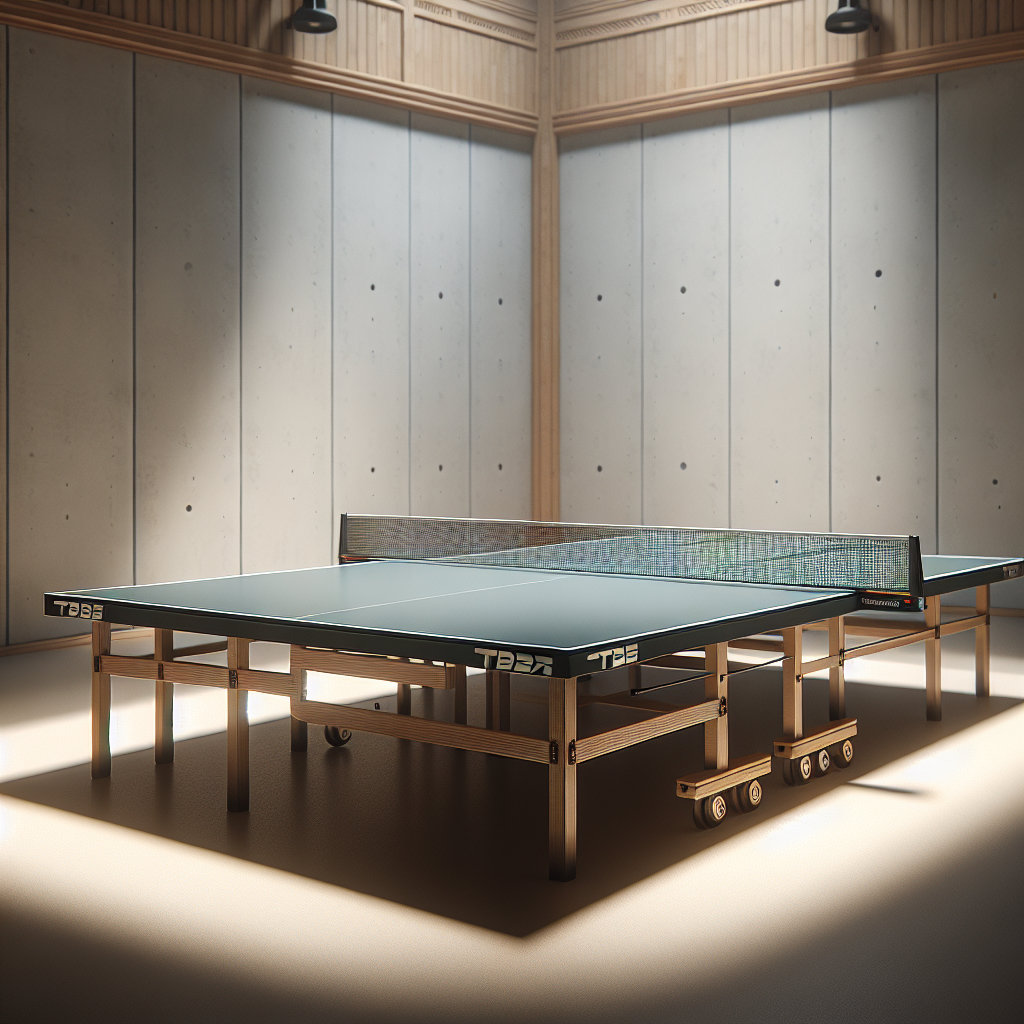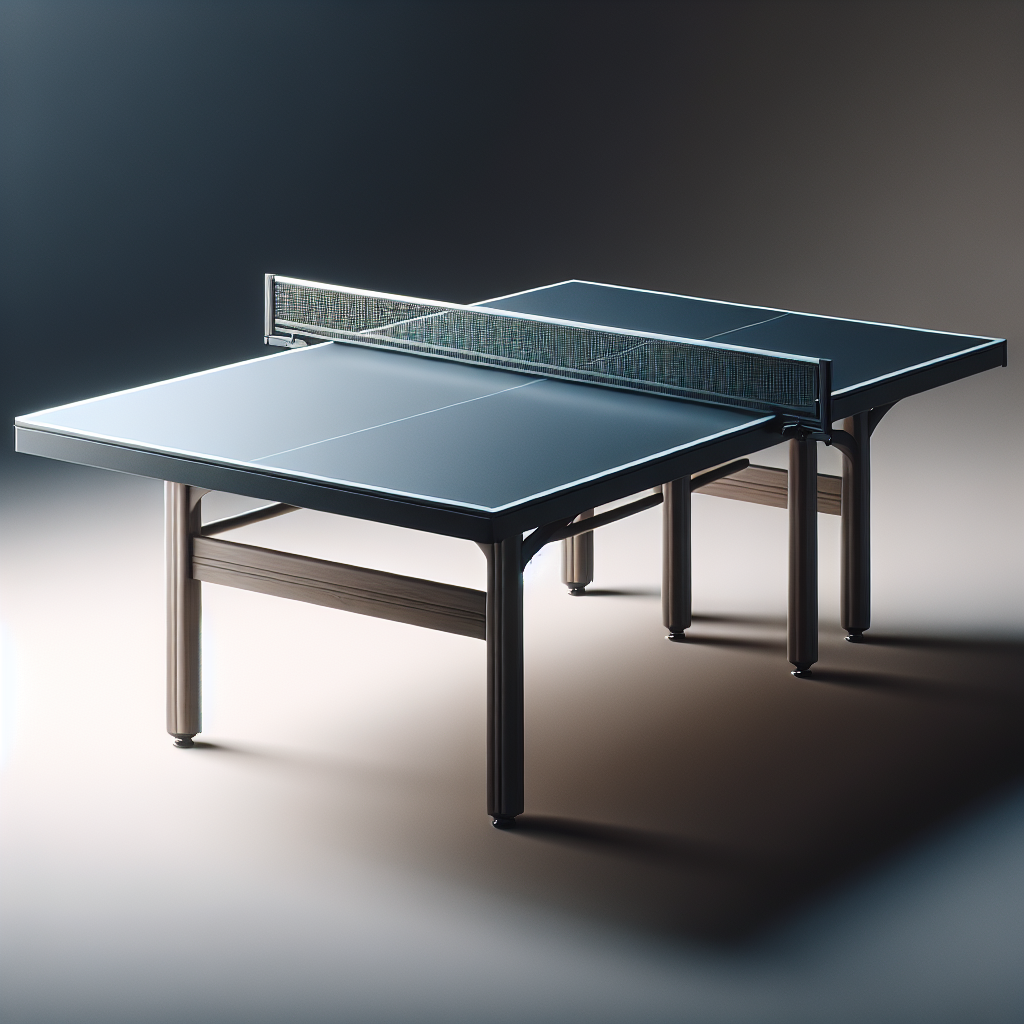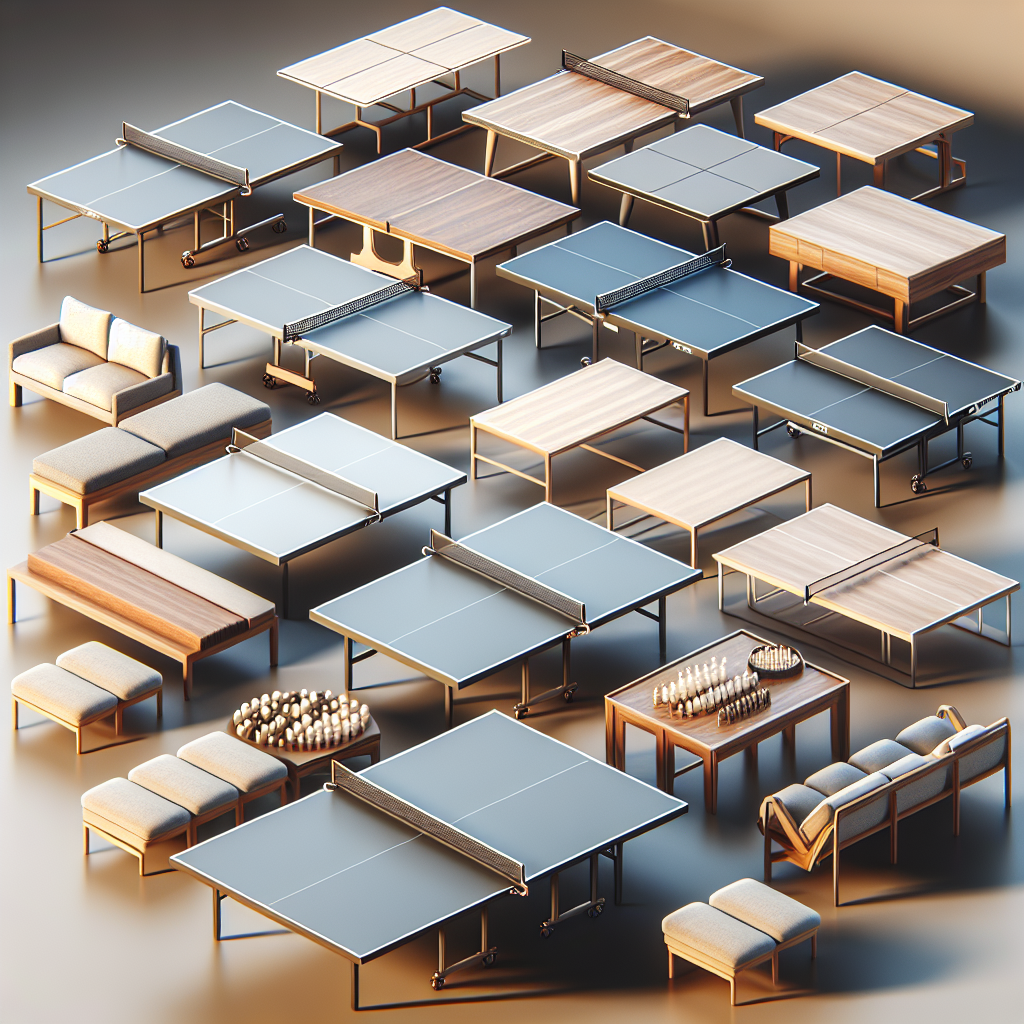Choosing the Right Table
When it comes to selecting the perfect indoor ping pong table, there are several factors to consider. This section will explore two important aspects to help you make an informed decision: tournament-level features and standard table size.
Tournament-Level Features
If you’re a serious ping pong player or aspire to compete at a professional level, it’s essential to choose a table that offers tournament-level features. These features ensure that the table meets the standards set by official ping pong associations, providing an optimal playing experience.
One recommended option is the MyT 415 Max Indoor Ping Pong Table. It offers a tournament-level playing surface and durability suitable for beginners, while its 25mm top provides excellent performance for more advanced players (Killerspin).
Standard Table Size
Ping pong tables come in various sizes, but it’s important to select one that adheres to the standard table dimensions. A standard table size ensures fair gameplay and compatibility with official regulations.
The recommended table size for indoor ping pong is 9 feet long by 5 feet wide, with a height of 2.5 feet. This size allows for comfortable gameplay and ample space for players to move around the table. To learn more about ping pong table dimensions, you can refer to our article on ping pong table dimensions.
By choosing a table with tournament-level features and adhering to the standard table size, you can ensure an authentic and enjoyable ping pong experience. Remember to also consider other factors like construction materials, brand reputation, and additional features when making your final decision. For more information on the best ping pong tables available, check out our article on best ping pong tables.
Construction Materials
When it comes to indoor ping pong tables, the choice of construction materials plays a crucial role in the overall quality and performance of the table. In this section, we will explore the two key components: tabletop materials and frame composition.
Tabletop Materials
The tabletop of an indoor ping pong table is where the action happens. It is essential to consider the material used for the tabletop as it directly affects the ball bounce and durability of the table.
Most general indoor ping pong tables are made of plywood or particle board, which are either painted or have a plastic layer on top. The playing surface is typically made of particleboard, medium-density fiberboard (MDF), or plywood and covered with a thin layer of laminate (STIGA). These materials provide a smooth and consistent playing surface, allowing the ball to bounce predictably.
The thickness of the tabletop is another important factor to consider. Ping pong tables are available in various thicknesses, typically ranging from 12mm to 25mm. Thicker tables (20-25mm) provide a more consistent and higher ball bounce, allowing players to execute spin shots and more intricate techniques. Thicker tables are also more robust and resistant to warping or sagging over time, ensuring a level playing surface. Thicker ping pong tables often boast improved durability and longevity compared to thinner tables. The additional thickness adds structural integrity, making the table more resistant to wear and tear, chipping, cracking, or warping, ensuring a long-lasting investment.
Frame Composition
The frame of an indoor ping pong table provides stability and support to the tabletop. It is crucial to choose a table with a sturdy frame composition to ensure durability and longevity.
Most general indoor ping pong tables have frames made of aluminum or an aluminum alloy (Quora). Aluminum is lightweight yet strong, making it an ideal choice for the frame. It offers stability without adding excessive weight to the table, allowing for easy portability and storage.
The frame should be designed with a solid and secure connection to the tabletop, ensuring that the table remains sturdy during intense gameplay. A well-constructed frame provides the necessary support for the tabletop, preventing any wobbling or movement that could affect the quality of play.
By considering the tabletop materials and frame composition, you can make an informed decision when selecting an indoor ping pong table. Opting for a table with a high-quality playing surface and a sturdy frame will enhance your playing experience and ensure the longevity of the table.
Notable Brands
When it comes to indoor ping pong tables, there are several notable brands that offer high-quality options for players of all skill levels. Two prominent brands in the market are STIGA and JOOLA. Let’s take a closer look at their notable ping pong table models.
STIGA Advantage Pro
The STIGA Advantage Pro ping pong table is designed for professional-level play, making it an excellent choice for serious players looking to elevate their game. It features a 20mm-thick table top with multiple roller coat finish and silk-screen striping, ensuring a smooth and consistent playing surface. This table is competition-ready for indoor use (STIGA).
One of the standout features of the STIGA Advantage Pro is its 10-minute QuickPlay design. The table arrives 95% preassembled out of the box, allowing for quick and easy setup. The independent chassis design enables two completely separate table halves, making it possible to practice alone in the playback position (STIGA).
Transporting and storing the STIGA Advantage Pro is hassle-free, thanks to its 4″ lockable casters. These casters provide smooth mobility while ensuring stability during gameplay. This feature makes the table convenient for users who may need to move or store it regularly.
The table comes with a tournament-quality cotton-blend 72″ net. It features a sturdy steel spring clamp post system that allows for quick and easy setup and removal. The net can be assembled and removed from the table in seconds with a simple squeeze of the clamp, ensuring minimal interruptions to gameplay.
With its exceptional build quality, tournament-level features, and attractive price point, the STIGA Advantage Pro is a popular choice among players seeking a high-quality indoor ping pong table.
JOOLA Inside Professional MDF
Another notable brand in the world of indoor ping pong tables is JOOLA, and their Inside Professional MDF table is worth considering. This table combines durability and performance to provide an enjoyable playing experience.
The JOOLA Inside Professional MDF table features a 15mm-thick table top made of medium-density fiberboard (MDF). This material offers excellent bounce and consistent ball response, allowing for accurate and fast-paced gameplay. The surface is finished with a smooth coating to enhance playability.
Similar to the STIGA Advantage Pro, the JOOLA Inside Professional MDF table also boasts a convenient design. It comes with a two-piece construction, making it easy to assemble and store when not in use. The table halves can be separated and used individually for solo practice sessions.
The table is supported by a sturdy undercarriage with 1.5″ steel legs. This ensures stability during intense matches while providing a solid foundation for consistent play. The included locking casters allow for effortless transportation and secure positioning of the table.
Overall, the JOOLA Inside Professional MDF table offers a reliable and durable option for indoor ping pong enthusiasts. Its sturdy construction and quality playing surface make it a great choice for players looking to improve their skills and enjoy competitive matches.
By considering tables from reputable brands like STIGA and JOOLA, you can select an indoor ping pong table that meets your specific needs and provides a top-notch playing experience. Whether you choose the STIGA Advantage Pro or the JOOLA Inside Professional MDF, both options are designed to enhance your ping pong skills and take your game to the next level.
DIY Ping Pong Table
For those looking to save some money and add a personal touch to their ping pong experience, building a DIY ping pong table can be a rewarding project. Not only is it a cost-effective option, but it also allows you to customize the table to fit your specific needs and style. In this section, we will explore the cost-effective build and provide detailed construction steps to guide you through the process.
Cost-Effective Build
Building a DIY ping pong table can be done for under $200, making it an affordable alternative to purchasing a ready-made table. By sourcing materials and constructing it yourself, you can save money while still enjoying the game. The materials required for this project are easily accessible and can be found at your local hardware store.
Although this DIY ping pong table is suitable for indoor use, it’s important to note that the table top support is built out of non-pressure-treated lumber, which may not withstand the elements if left outdoors. To protect the table, it is recommended to treat the lumber if the table will be exposed to water. However, if you plan to use it exclusively indoors, such as in a garage or shed, this step is not necessary.
Detailed Construction Steps
To help you in building your own DIY ping pong table, here are some detailed construction steps:
- Gather the materials: Collect all the necessary materials, including lumber, screws, ping pong net, and other tools required for the project.
- Cut the wood: Measure and cut the lumber according to the provided dimensions to create the table frame and legs.
- Assemble the frame: Assemble the table frame by attaching the legs to the tabletop support.
- Build the tabletop: Attach the plywood or MDF board to the frame, ensuring it is securely fastened.
- Create the net supports: Cut grooves into the 2×4 lumber to create the net supports, following the specific measurements provided.
- Attach the net supports: Attach the net supports to the center of the table top, ensuring the proper placement for the net.
- Finish and paint: Sand any rough edges and apply paint or finish to protect the wood and give the table a polished look.
- Install the ping pong net: Attach the ping pong net securely to the net supports, ensuring it is centered and at the proper height.
By following these construction steps, you can create your own DIY ping pong table and enjoy the game in your own space. Remember, safety should always be a priority when working with tools and equipment. Seek help or professional assistance if you are not experienced with certain aspects of the construction process, such as using a table saw for cutting grooves.
Now that you have the knowledge and steps required, you can embark on your DIY ping pong table project. Enjoy the satisfaction of playing on a table you built yourself and take pride in the cost-effective and personalized addition to your indoor space.

